#261 Tatshenshini Man
March 07th, 2018

Kwäday Dän Ts’ìnchi: Teachings from Long Ago Person Found
by Richard J. Hebda, Sheila Greer, and Alexander Mackie (editors)
Victoria: Royal British Columbia Museum, 2017
$49.95 / 9780772666994
Reviewed by Tom Koppel
*
The walker who came in from the cold is the subject of a new book that has already won the Pojar Award and was shortlisted for the Basil Stuart-Stubbs Prize and the BCHF Historical Writing Award.
*
It was back in August of 1999, in the northwest corner of British Columbia, in the traditional territory of the Champagne and Aishihik First Nations, when three sheep hunters discovered ancient human remains and artifacts at the edge of a glacier.
Since then the well-preserved wanderer who died in the mountainous Tatshenshini-Alsek Park has attracted the attention of archaeologists and scientists from across Canada. An autopsy revealed that this was a healthy young man, about eighteen years old, who had died a non-violent death, most likely from exposure and perhaps due to a sudden summer whiteout and storm.
Scientists have estimated the young man probably lived and died anywhere between 1720 and 1850–likely slightly after ‘pre-contact’ times for that region.
He was subsequently referenced as Kwäday Dän Ts’ìnchi (pronounced “kuday dancinchi”) or “Long Ago Person Found” in the Southern Tutchone language. The authors note that elders named the overall project Kwäday Dän Ts’ìnchi and hoped the man’s name could be found during the course of the project.
Internationally, Kwäday Dän Ts’ìnchi has been compared to Ötzi, the well-preserved 5,000 year-old mummy found in the Italian Alps in 1991, and an internet search for “Canadian ice man” will take you to right to him and his fascinating story.
Now that northern B.C. Iceman has come in from the cold. Our reviewer Tom Koppel calls Kwäday Dän Ts’ìnchi “a brilliant case of forensic sleuthing and an encouraging mode for how modern science can collaborate fruitfully with First Nations people today while respecting their traditional culture and values.”
Consequently, in February, Kwäday Dän Ts’ìnchi: Teachings from Long Ago Person Found, edited by Richard Hebda, Sheila Greer, and Alexander Mackie, was announced as the 2018 winner of the Jim Pojar Award of the Bulkley Valley Research Centre and it was also shortlisted for the 2018 Basil Stuart-Stubbs Prize for Outstanding Scholarly Book of B.C. (won by Secwépemc People, Land, and Laws: Yerí7 Stsq̓ey̓s-kucw, by Marianne Ignace and Ronald Ignace / McGill-Queen’s University Press). Previously the Kwäday Dän Ts’ìnchi project had won the B.C. Museums Association Award of Merit in 2002 — Ed
*
In August 1999, three hunters — Nelson teachers Bill Hanlon, Mike Roche, and Warren Ward — were after Dall’s sheep above the tree line at 1600 metres in Tatshenshini-Alsek Park in the northwestern-most corner of British Columbia. They came upon human remains and scattered artifacts melting out of the edge of a glacier. From what they could see of the person’s clothing, they realized that the body might be very old.
Site location of Kwäday Dän Tsìnchi.
Having the good sense to disturb the find as little as possible, they took photos, gathered a few artifacts to verify their story, made the two-day hike out to their vehicle, and reported to a government archaeologist in the adjacent Yukon Territory. Thus began a multi-year project to study what proved to be a young man, and place his death in its geographic, historic, cultural, and genetic context.
Kwäday Dän Ts’ìnchi: Teachings from Long Ago Person Found is a hefty 704 pp., double-columned, 37-chapter compendium by several dozen contributors. Full of tables, charts, maps and photos (b & w and colour), it documents in great detail both a brilliant case of forensic sleuthing and an encouraging model for how modern science can collaborate fruitfully with First Nations people today while respecting their traditional culture and values.
Serendipity was certainly at work. The editors note that the discovery occurred “in a period of warming and melt…. These hunters happened by at the right time of year and at the right time in the melting of the… glacier. A few years earlier and the remains might have stayed hidden; a few years later and the body may have been completely exposed and dispersed.” (p. 57)
Likewise, if the discovery had come a decade or so earlier, there would have been a far less trusting relationship between the Champagne and Aishihik First Nations (CAFN), whose territory includes the park, and the government and scientific establishments. It was also fortunate that expert personnel could be mustered so quickly, and specialized labs and other facilities lined up to go into action.
Speedy action was essential to minimize summertime decay of the remains and artifacts. Within three days, a helicopter flew a small group representing CAFN, BC Parks and the Yukon government up to reconnoitre the site and confirm that the body was mainly still frozen.
The underside of Kwäday Dän Tsìnchi’s hat newly found. Sarah Gaunt photo Champagne and Aishihik First-Nations.
Meanwhile, in Victoria, Whitehorse, and CAFN headquarters in Haines Junction, Yukon, decisions were being made on how to manage this unique find, especially how the human remains would be handled and other artifacts studied and curated. A larger team was organized for the crucial first recovery effort, only nine days after the discovery.
Later years brought significant follow-up visits during the limited safe flying days of summer to search for additional remains and artifacts and to better understand the surrounding terrain.
Leading the scientists making the initial recovery were Alexander Mackie of the BC Archaeology Branch [also a brother of Richard Mackie, the editor of The Ormsby Review] and Owen Beattie of the University of Alberta.
Beattie is a forensic anthropologist experienced in dealing with frozen bodies and is best known for his study of dead crewmen from the Franklin expedition buried in the Canadian Arctic.
Sterilized coolers and freezers were used to transport the remains and key artifacts to Whitehorse and then to the Royal BC Museum in Victoria. Once safely protected from thawing and contamination, the plan for studying them by different teams of specialists could be worked out, and the individual or team tasks assigned.
*
Owen Beattie
Key objectives were to determine who this person was, when and how he died, why he was travelling this glacial route, and how he might be related genetically to the interior southern Tochone (Dän) people or the nearby, mainly coastal Tlingit.
A decisive element in the study was the ability to autopsy the body, a task led by Owen Beattie, and attempt to date it directly. (The remains were eventually cremated, one of the region’s traditional ways of dealing with the dead, and returned to the mountain in a CAFN ceremony.) The autopsy revealed that this was a healthy young man of about eighteen years who had died a non-violent death, most likely from exposure and perhaps due to a sudden summer whiteout and storm.
Amazingly, it was also possible to reconstruct his route and pace of travel from the contents of his stomach and bowels. The lowest bowels held marine foods eaten at or near tidewater about three days before his death, while just below his stomach there was inland (bison or caribou) meat. In his stomach itself there were tell tale mineral particles, likely from water he drank from glacial runoff ponds.
Pollen on the robe and in his digestive tract told a similar story of moving from sea level up into forested mountains and then beyond the treeline. (This work was led by palaeobotanist and lead author Richard Hebda of the Royal BC Museum.) Travelling light — perhaps he was a messenger — he had apparently hiked uphill at a pace estimated at three miles per hour for ten hours a day, probably starting near Klukwan, a major village up a river from Lynn Canal.
The ratio between carbon and nitrogen isotopes in his bones, hair and muscles showed that for most of his life he had eaten a mainly marine diet, but that in the final year or two he had begun to consume more interior foods, especially meat from land mammals. The implication is that he was a coastal resident (probably Tlingit) who had spent recent time in the interior territory of the Dän (southern Tochone) who inhabited the Tatshenshini basin.
Kwäday Dän Tsìnchi’s knife and its fur sheath. R. Gotthardt photo, Yukon Heritage Branch.
Tentative confirmation comes from a study of mitochondrial DNA from 241 First Nations people in the region who volunteered to provide blood samples. Seventeen were found to be from the same maternal lineage as the dead man.
[“The book explains the man was of the Eagle/Wolf clan (two different names from coast/interior for socially the same thing),” says Mackie. “All 17 identified relatives were of this clan. The clan is inherited maternally and the mitochondrial DNA that was used to ID relatives is also inherited solely along maternal lines. Therefore we are certain the man was Eagle/Wolf clan and certain he was not Raven/Crow.
“Discovering the clan identity was one of the most important and exciting results of the whole project. Identifying the man’s clan was, in Indigenous terms, a satisfactory answer to the Elders’ desire to know who the man was. It was also the first–and, as far as I know, the only–time such a result had been obtained from DNA analysis.–Ed.]
Given the precision of certain of these conclusions and the confidence of the scientists about them, it is surprising how difficult it was to date the find. Because he had eaten so much marine food, a correction in the radiocarbon dating of his body had to be made for the existence of “old carbon” in that food, the “marine reservoir” effect that plagues coastal archaeology.
Replica of Kwäday Dän Ts’ìnchi’s knife and squirrel hide sheath made by Shawn Woods. David Smith photo
There was a related problem involving some of the wooden artifacts found in association with the body, because these could have been from old wood taken from inner parts of long-lived trees. The less than satifying conclusion was a wide time span in which the team estimated that the man probably had lived and died: anywhere between 1720 and 1850.
Such a date places him either in pre-contact times for that region — Russians did not arrive on the Alaska coast until 1799 — or well into the post-contact period, when aboriginal life in the area was changing rapidly. The fact that, although not ill, he was carrying a tuberculosis bacterium whose DNA sequence was “identical to European lineages” hints that the post-contact period may be more likely.
Dating and other analysis of the many types of artifacts he carried greatly enrich the picture of this young man’s life and its social and economic context.
He was carrying a decorative bead made of native copper, which was a common trade good that passed from the interior to the coast. The iron blade of his knife demonstrates the availability of non-meteoric iron, perhaps from trade or alternatively from beachcombing driftwood.
Sinew from a humpback whale had been used to repair the robe he wore, perhaps showing trade along the coast. But the robe itself had been painstakingly sewn together using 95 skins of Arctic ground squirrels (“gophers”), which were snared and commonly eaten in the interior. As recently as the late 1800s, some Dän women were still making these robes and trading them to the coastal Tlingit.
The book features some fascinating oral histories that, in some cases, were gathered years before the discovery by lead author and anthropologist Sheila Greer, who has been adopted into the CAFN, and the late Sarah Gaunt of CAFN. These show that trade between the Dän and the Tlingit, and marriage exchange as well, was intense in both directions.
Prior to contact, “Interior goods such as copper, white marble (used for dolls’ heads), beautifully tanned skin garments decorated with porcupine quills, ground squirrel robes and other furs, rare feathers and soapberries in birch-bark boxes,” went down to the coast. In exchange, the Dän received cedar bark baskets, fish oil, iron, and shell ornaments.
After contact, a wide range of European goods made their way inland, with the Tlingit jealously preserving their role as intermediaries. A number of wooden sticks found on or near the glacier during post-recovery searches point to the likelihood that the lost man was following a well-established route used, among other purposes, for trade.
The project stimulated several initiatives and educational/cultural efforts among the CAFN people, including workshops to revive the weaving of spruce root hats, similar to the one found with the body. Snaring gophers, tanning the skins, and learning to sew them into robes or blankets was also tried by a group of female elders, but none were able to achieve quite as good a result as the robe the young man had worn. The skill of those eighteenth or nineteenth century craftspeople was impressive.
A highlight for this reader was the chapters portraying the Tatshenshini region itself in its historic and prehistoric context. Today, it is considered an extremely remote place noted for its spectacular scenery, one that few outsiders visit except for rafting trips down an unpopulated and gorgeous river valley fringed by mountains, snowfields and glaciers.
But a couple of centuries ago it was a busy place, with hundreds of inhabitants living in several riverside villages that depended on catching and preserving salmon and hunting or trapping interior mammals. There was frequent travel up and down the river for trade and inter-marriage.
An important, albeit sobering, historical chapter shows how contact and the arrival of colonial authorities disrupted traditional life along the river. Arbitrary boundary lines and new rules on trapping separated many of the Dän people from the natural food resources of their ancestors. Introduced diseases brought epidemics that wiped out twenty-five to fifty percent of the population. By the twentieth century, nearly all the remaining Tatshenshini residents had moved upriver and into the Yukon.
This book is not for everyone. It could have been half as long if written by a single author, or by a smaller group, and aimed at a more general readership. It is, however, an important document as well as a resource book for scientists in many disciplines. Each contribution provides a thorough account of a narrow portion of the overall study. There are chapters, for example, focussing on identification of the dried sockeye salmon the man was carrying, analysis of the microorganisms in his bone and muscle tissues, and traditional stories of glacier travel in the region.
Inevitably, this leads to considerable duplication and repetition. A few chapters may be so difficult for the non-specialist to follow, or include such long lists (e.g. of vascular plants, bryophytes, lichens and algae from the discovery site), that some readers will want to skim over them.
On the other hand, many chapters are elegant essays that stand well on their own. The forensic accounts of what he ate, and when, and what that tells us about his route of travel, are easy to follow and enthralling. So are the chapters on how the spruce root hat was woven, how the gopher skin robe was stitched together, and what the dangers and advantages are to following a route that crosses glacial ice.
The book represents a poignant contribution to the history of British Columbia, a major body of knowledge that would not exist if a young man had not perished on a glacier so many years ago.
*
Tom Koppel is a veteran B.C. author and journalist who has published five books on history and science. For 35 years, he has contributed feature articles to major magazines, including Canadian Geographic, Archaeology, American Archaeology, Equinox, The Beaver, Reader’s Digest, Western Living, Islands, Oceans and The Progressive. His most recent book is Mystery Islands: Discovering the Ancient Pacific (University of the South Pacific Press, 2012). Tom Koppel lives with his wife Annie Palovcik on Salt Spring Island.
*
The Ormsby Review. More Readers. More Reviews. More Often.
Reviews Editor: Richard Mackie
Reviews Publisher: Alan Twigg — BC BookWorld / ABCBookWorld / BCBookLook / BC BookAwards / The Literary Map of B.C. / The Ormsby Review
The Ormsby Review is a new journal for serious coverage of B.C. literature and other arts. It is hosted by Simon Fraser University. The Advisory Board consists of Jean Barman, Robin Fisher, Cole Harris, Wade Davis, Hugh Johnston, Patricia Roy, David Stouck, and Graeme Wynn.
“Only connect.” – E.M. Forster
*
About the Champagne and Aishihik First Nations
The Shadhäla, Äshèyi yè kwädän (Champagne and Aishihik First Nations) is a self-governing First Nation located in the Yukon Territory and northwest British Columbia. Their homeland is a land of kwata (forests), dhal (mountains), taga (rivers), man (lakes) and tan shį (glaciers), with spectacular scenery and diverse resources and cultural riches. The land has offered mbat (food), ur (clothing) and kų (shelter) to CAFN ancestors for many generations. CAFN has more than 1,200 Dän (people) and is one of the largest of the 14 Yukon First Nations.
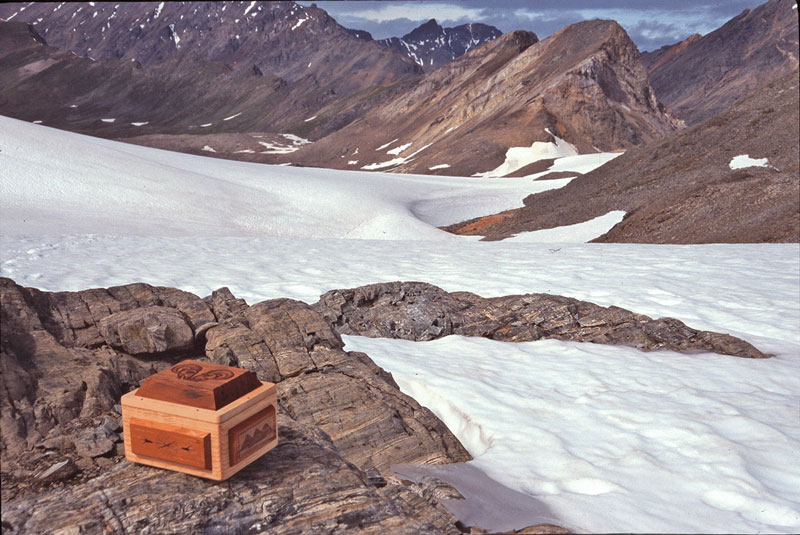
This newly carved box was made to contain the remains of ‘Long Ago Person Found’ for his burial near where he was found in Tatshenshini-Alsek Park. CAFN photo.

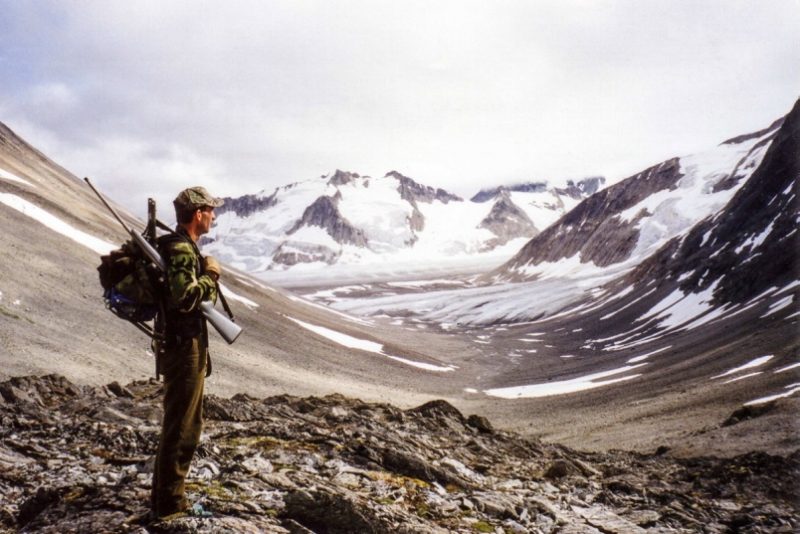
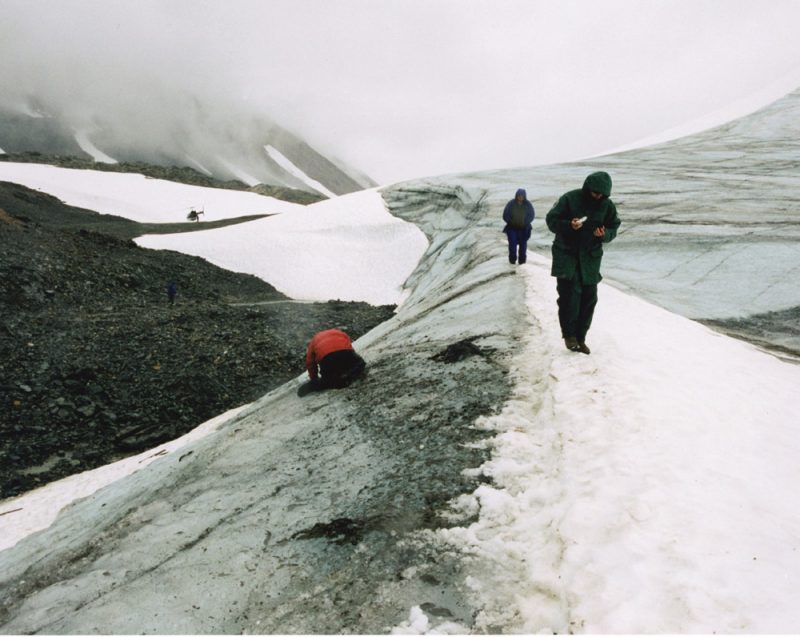

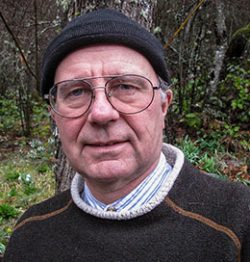

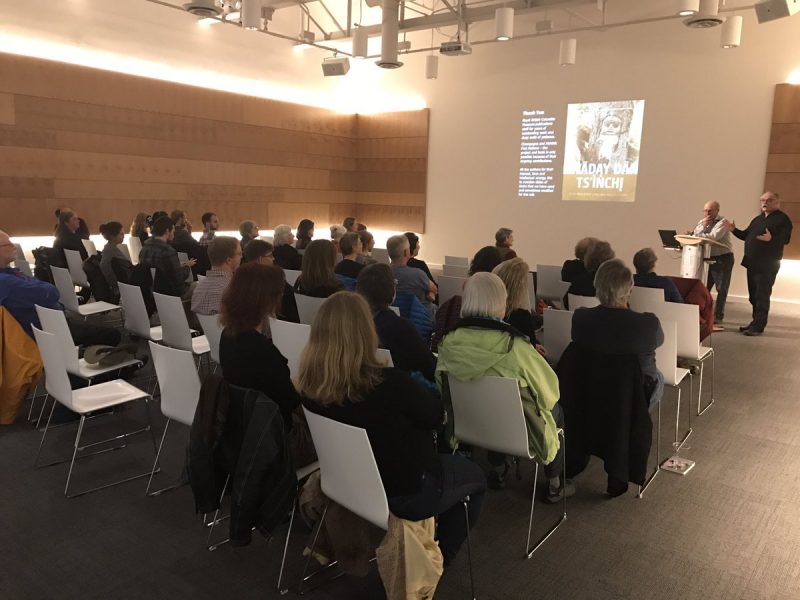


Leave a Reply